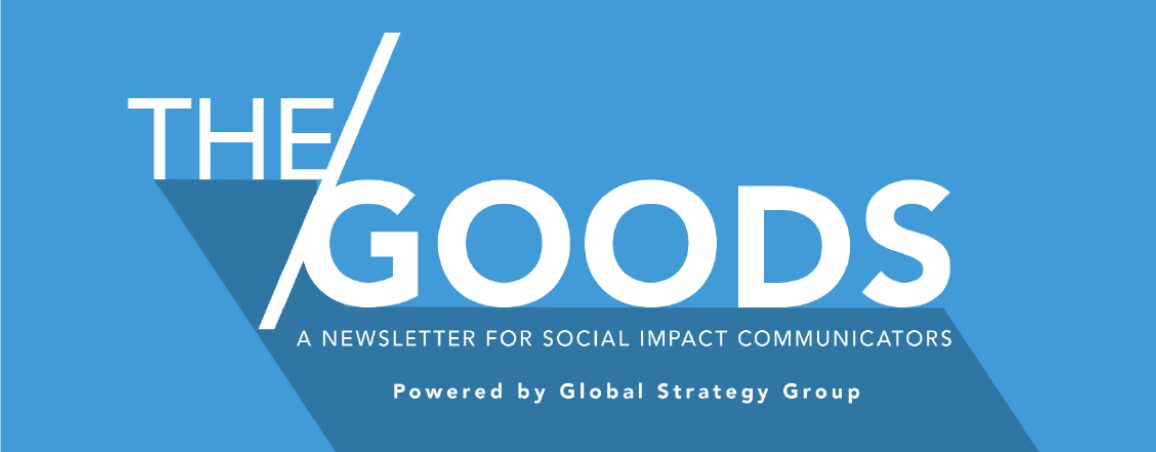
With the ongoing uncertainty surrounding changes on the Twitter platform, we’ve met with a number of our clients who are rightly concerned about impersonation, data privacy, hate speech, and brand safety. The questions are swirling (Should my organization leave the site altogether? What happens if we stay? What is even going on over there?). From guidelines to recommendations, GSG’s in-house digital media specialists, THE L@B, has created this special edition of The Goods newsletter to help you navigate the current situation.
WHAT’S HAPPENING
As you probably know, the situation at Twitter has swung in wildly different directions. Here are just two significant developments we’ve been tracking:
- Twitter verification: As a first step towards generating additional revenue for Twitter, Elon Musk expanded “Blue Check” verification to any user on Twitter for $8 a month. The paid-for verification policy opened the door for users to create troll accounts and pretend to be another person or organization (see: Eli Lily, Ed Markey). As of 11/11, this subscription has been paused due to troll accounts imitating brands and acting nefariously. On 11/29, Twitter Blue will be reactivated, and an “Official Stamp” will be included underneath the handles of profiles with their identification verified, separate from the “Blue Check”. After the 11/29 launch, it will be important to monitor platform behavior to ensure users understand the difference between a “Blue Check” and the “Official Stamp”.

- Data Privacy: On 11/10, reports circulated that Twitter’s Data Protection Officer had resigned over data privacy concerns. This prompted both the Federal Trade Commission and EU Data Protection Commission to meet with Twitter to discuss steps for protecting users on the platform. Data privacy policy violations could lead to steep fines and lawsuits against company executives, pushing the company closer to a potential bankruptcy. We will continue monitoring this story as it develops, as well as how it could impact organizations.
QUESTIONS TO ASK YOURSELF
Now is the time to reflect on how your organization is using Twitter and its value to your reputation and end goals.
What is the business value of Twitter to your organization and how do you use it?
- Brand Awareness: Is the primary purpose of your Twitter account to build brand awareness with consumers, media, or key stakeholders? Consider the reputational risks associated with continuing to use the platform (see ”Brand Values” section below).
- Outbound Traffic to your Website: Is Twitter a primary driver of traffic to your website? What will be lost if you move away from the platform? Increased engagement, including paid advertising, on other channels can help promote your messages or organization and replace any website traffic lost if you decide to pause or move away from your Twitter account.
- Customer Service: Is Twitter your primary platform for managing customer questions and complaints? If a client is using Twitter for customer service purposes, it is important to clearly establish other channel(s) for support in the event Twitter support is interrupted. We are advising clients in those situations to have a communication ready to share with customers that says where they can get help online and to share that broadly if they do decide to leave the platform or pause activity on it.
Is Twitter worth the headache?
Immediately following the purchase of Twitter, research groups such as the Network Contagion Research Institute flagged a sharp increase in both racist, misogynistic, anti-LGBTQ+, and anti-Semitic language. Continuing to engage with Twitter can pose brand safety and reputational risks in the following ways:
- Organic and promoted tweets could potentially appear next to hate speech and other negative or controversial content, creating backlash for an organization or individual.
- Investing in paid media on Twitter could be perceived as “agreeing” with the company’s current policies and management of hate speech, inviting criticism from watchdog groups. For example the NAACP and ADL have both made calls to action for advertisers to boycott the platform until a clear hate speech policy is put into place. This, along with other concerns, has led to brands like General Motors, Mondelez, and Pfizer, as well as agencies like Interpublic and Omnicom to pause advertising activity.
OUR RECOMMENDATIONS
No matter what you decide:
- Monitor @ElonMusk on Twitter. After Twitter’s decision to eliminate the bulk of its communication’s team, Musk’s Twitter is the most direct line for updates on platform and policy updates.
- Consider archiving your tweets. You may be worried about the site going down all together, along with your virtual collection of years-worth of work. Follow this step-by-step guide on how (and why) to archive your posts from the New York Times.
If you decide to STAY ON Twitter:
- Increase your platform monitoring. With the increase in fake brand accounts, your social media community management team should be utilizing social listening tools to follow the conversation around your brand. Be prepared with a crisis communication plan that addresses how you will handle communications about potential impersonators, as well.
If you decide to LEAVE Twitter:
- Don’t delete your account. This creates opportunities for trolls to take your handle and impersonate your organization.
- Make a clear public statement in your Twitter feed. Explain why you’ve decided to exit the platform. Explain that the move is potentially temporary, and state where users can find the latest updates about your organization in the meantime.
- Continue monitoring the platform. Leaving Twitter doesn’t mean your brand can fully disengage with the platform. Conversation will continue, and there is still potential for fake accounts to pop up. Increasing social media listening and having a plan in place will ensure your organization is prepared to respond to this ongoing situation.